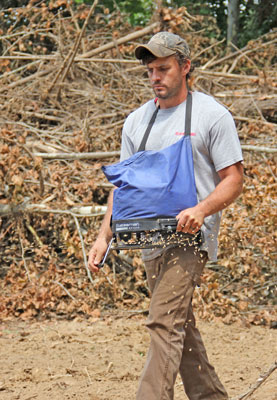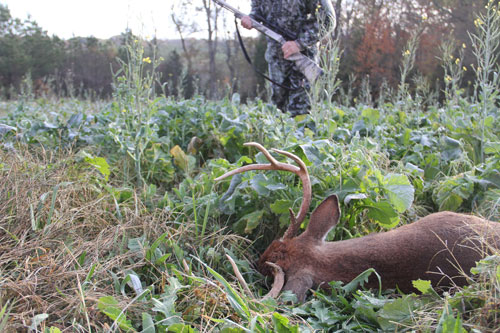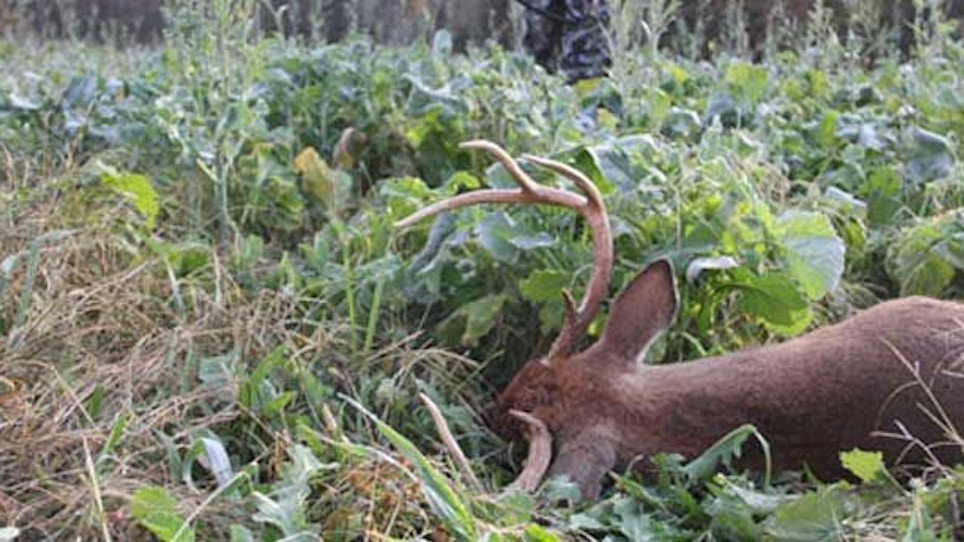
Those dates, located on seed bags, provide the best thumbnail sketch of when you should plant, but they can’t take into account dry spells. That’s why you might have to plant a bit earlier or later than the recommended dates in order to put the seed down on moist soil. Kammermeyer admits that pushing the date forward in the spring or back in the fall is a gamble. Plant summer peas, sunflowers or sorghum too soon, for example, and your seedlings could get hit by a late frost. Sow turnips, brassicas or chicory too late in the fall and your soil temperature might not be warm enough to stimulate germination and root growth. Shorter days also mean less sunlight, which ultimately leads to stunted plants that don’t reach their full potential.
Go Native
Don’t panic if persistent dry weather prevents you from turning a patch of ground into a lush stand of chicory or turnips. There’s still plenty of food out there for a deer. In fact, whitetails got along just fine before anyone ever thought about planting the first clover, turnip or chicory seed for a deer. Native and naturalized vegetation grows where it does because it’s evolved to survive a variety of extreme weather conditions, including drought. That’s not to say even the most hearty plant won’t be stressed by a long dry spell, but things like oak trees, honeysuckle vines and blackberry bushes will always pull out of a drought when they get a little rain.
Kammermeyer says one way to keep deer on your property is to give that native vegetation a helping hand by feeding it. Fertilizing oaks or other natural forage is no different than providing your food plot plants with a dose of fertilizer.
“There haven’t been any peer-reviewed studies that examined the effects of fertilizing oaks, but I’m confident it can boost acorn production,” he says. “I recommend any balanced fertilizer like 10-10-10 or 13-13-13 spread around the drip line at a rate of two pounds per inch diameter at breast height.”
That means a tree that’s 10 inches in diameter at your chest height will need 20 pounds of fertilizer. But instead of dumping it at the base of the tree, spread it as far out as the branches extend.
Kammermeyer also recommends spreading nitrogen-rich fertilizers on honeysuckle, blackberries and other browse once in the early spring and again in the early fall. That builds healthy plants that are rich in nutrients, which, in turn, offers the deer better forage than they might get from unfertilized plants.
Don’t Stress

“You want to avoid stressing the plants any more than you have to. Mowing or spraying might seem like a good way to control weeds, but if the plants are dormant, mowing won’t do you much good anyway,” says Kammermeyer. “You need to do your maintenance when the plants are actively growing, either in the spring or early fall.”
More Of The Same
Those plants only grow when they have some rain, though, which leads to the question: When will they get it? Whether you blame it on Earth’s natural long-term climate cycles, man-made global warming or an act of God, one thing’s for sure — it could be days or even weeks before the next rain falls. It might even be longer.
Long-term weather trends have pointed toward hotter, drier growing seasons, and next year could be another scorcher. The Climate Prediction Center, a branch of NOAA, painted a grim picture for a large part of the contiguous United States for the late winter. Areas that were under a severe drought last year will likely remain locked in the same pattern for at least part of this year. Although the CPC does not provide forecasts beyond three months, a meteorologist with the agency said even if weather patterns do return to the long-term average and we get ample rain, it’s going to take a lot of moisture to bring some regions out of drought. Don’t hesitate to plan your food plots, but be prepared to make some changes, because it might be another hot year.






